Every fish-loving Bengali waits eagerly for the monsoons to arrive. Not so much to get a respite from the hot summer days, but to relish a piece of the Hilsa fish, locally known as ilish. Decades of fascination for ilish amongst Bengalis have made this fish a glorious and dare I say luxurious part of their lifestyle, culture and heritage. The madness that accompanies the arrival of this fish in the markets lends spicy fodder for pages of stories. The Bengali community on both sides of the India-Bangladesh border consider ilish as an integral part of any elaborate festive fare. Gradually, the Hilsa has eked out a vital part in the traditions as well, starting with Poila Boisakh (the Bengali New Year day).
As part of the Bengali New Year celebrations in Bangladesh, it is customary to share a meal of ilish maachh and panta bhaat (fermented rice) with friends and family. It is also customary among some Bengali Hindus to have ilish on the day of Saraswati Puja. West Bengal simply revels in any and all delicious recipes of ilish along with their chingri (prawn) and mutton. On special days, festivals, family gatherings and many other occasions such as private lunch and dinner parties, ilish hogs the centrestage.
As the months go by and monsoon comes – the dedicated ‘ilish-season’ welcomes good crops of ilish and the markets literally get flooded with this shining, silvery fish with a delicate pink streak. It is not at all surprising that the demands never lessen and the prices invariably stay on the higher sides going upto Rs 2000/- per kg. But that never deters the ilish bhakts to relish the killer combo of khichuri and ilish bhaja to satisfy the cravings of most Bengalis on a rainy day.
The eternal debate between Ghoti (Bengalis hailing from West Bengal) and Bangal (Bengalis originating in Bangladesh) over the supremacy of ilish from Ganges and Padma respectively, goes on. Despite all such controversial banter, ilish thrives on as a favourite subject in Bengali art and literature as well. Bengali poet Satyendranath Dutta has dedicated a poem to Hilsa titled “Ilshe guri”. which we, as children, would recite on rainy days without actually understanding the meaning. Most of us loved ilish and enjoyed reciting it loudly. Amongst us there were both Ghotis and Bangals and would often hear my father say, “Ghotis do not know how to cook ilish!” and would then go on to recount the steamer journeys across the Padma and the delicious “Kochu Diye Ilish er Laal Jhol (Hilsa curry cooked with taro)” served on board.
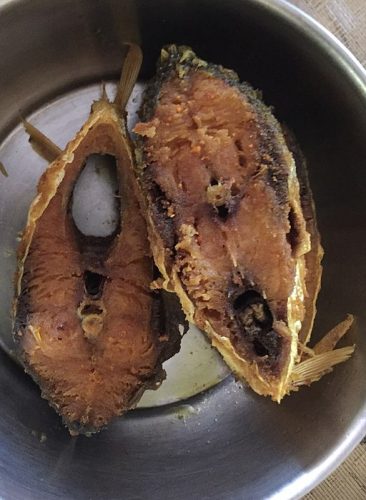
But who are the Bangals and Ghotis? The Bangals are the people who migrated to India from eastern Bengal (later East Pakistan and now Bangladesh) at various times and often indulge in flippant jokes about food and football with the Ghotis, the original inhabitants of West Bengal. The Bangals associate themselves with ilish and the East Bengal football club, who are snubbed by the Ghotis who link themselves with chingri (prawns) and Mohun Bagan for football.
Hilsa has been one of the most important fishes; quite evident if you trace the culinary history of Bengalis on both sides of the border. However, Hilsa is much more abundant in Bangladesh which accounts for almost 75% of the world’s Hilsa production, but the madness associated with this fish or should we say, the deep emotional attachment to it, in the state of West Bengal, has made it a commodity that defies economics.
Perhaps ilish is the only fish that finds pride of place in the front-page columns of leading newspapers published from Bangladesh as well as West Bengal. Popular Bengali magazines devote pages to script Hilsa recipes culled from individuals and various restaurants. There are frenzied activities across Kolkata’s F&B outlets as they immerse themselves to curate ‘Hilsa Festivals’ or ‘Ilish Utsavs’. Many fill their curated menus with a variety of continental, Bangladeshi, fusion and ‘Bengali’ (West Bengal specific) recipes.
Some of them are very innovative, though, they may not be as ‘delectable’ as ilish maachh bhaja (fried Hilsa) with rice and ilisher tel (the leftover oil from frying Hilsa) to be had with a pinch of salt and green chillies. It is heavenly! Even for Sharmila Basu Thakur, former editor of a regional women’s magazine and a popular host of Food Farishta, the YouTube channel, “My favourite preparation is the lightly fried ilish with tel which I relish with plain rice and kancha lanka (green chillies) and noon (salt)…nothing can beat that.”
A Bangal, with her ancestors hailing from Bikrampur (Munshiganj) in the Dhaka Division, of present-day Bangladesh, Sharmila is fascinated by the variety of preparations that has emerged from a Bangal’s kitchen…Lau Pata Ilish (Hilsa steamed with spices in bottle gourd leaves); Ilish Begun, Sada Ilish (Ilish and brinjal curry prepared with a hint of onion paste and curd); Ilish Maachher Dim Kanchkola aar Aloor Jhol (Hilsa roe with raw bananas and potatoes) and Mishti Kumro Begun Gathi Kochur Halka Ilisher Jhol (Hilsa prepared with pumpkin, brinjal and taro). She has perfected the art of cooking Hilsa from her mother, and very often offers these simple homemade recipes to guests at her pop-up meals.
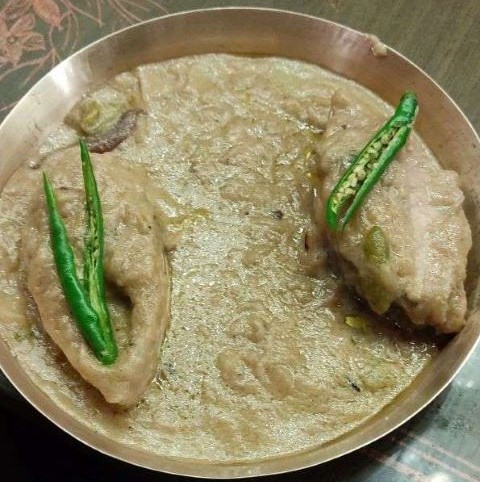
For a conservative ‘Hilsa’ fan, I can say with conviction that Hilsa doesn’t go well with pineapple rings, grapes or cheese. Even smoked Hilsa does not do justice to this fish. It is the traditional home-cooked simple recipes that highlight the flavours and unique taste of ilish! Be it ilish begun, (Hilsa cooked with sliced brinjal), shorshe ilish (Hilsa in mustard sauce), ilish paturi (steamed Hilsa cooked with mustard paste and grated coconut in a banana leaf wrap), kalo jeerey diye ilish er jhol (Hilsa curry with turmeric, salt and seasoned with nigella seeds) and bhapa ilish (steamed Hilsa in mustard paste)…all of them bring out the true taste of the fish.
From the various Hilsa festivals, hosted and being hosted by various hotels and restaurants, the one that appealed to me the most was the Sonar Ilish Utsav, curated by chef Bhaskar Dasgupta of Sonar Tori restaurant located at City Centre 1, Salt Lake, Kolkata. The festival curated lost Bengali Hilsa recipes from both sides of the international border. He said,“It has been my endeavour to bring back lost treasures from Bengali kitchens…from epar and opar. For the Sonar Illish Utsav, I have included a few classical recipes from opar Bangla, or Bangladesh, with specials such as Mawa Ghat Ilish Er Bhorta, Ilish Panikhola, Ilish Beguner Tawk, Aam Aacharer Ilish Bhapa and Kancha Lonka Ilish. The distinctiveness of these dishes was the use of garlic and onion which added uniquely different flavours and tastes to each of the preparations.
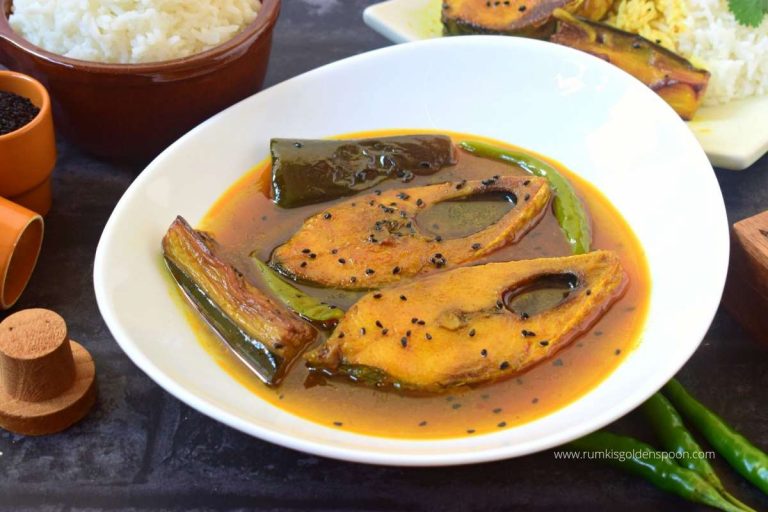
The Mawa Ghat Er Ilish Bhorta, was what I fancied the most from those listed on the menu. I had never tried a fish bhorta ever; it came served on a kansar thala (bell metal plate). Four tightly packed balls neatly arranged with green chillies. I picked up one, broke off a bit, mixed it with rice and had the first taste of Ilish bhorta; there was a burst of flavours in my mouth…ilish, green chillies, onions and garlic. It was a brilliantly prepared item, in which none of the add-on masalas took away the pure taste of Hilsa. Each of the items was a discovery for my epar Bangla palate…“Mawa Ghat Er Ilish Bhorta is a typical preparation from Munshiganj, Bangladesh,” informed Bhaskar. For the bhorta, pieces of Hilsa (the tail pieces) were shallow-fried in mustard oil, then the flesh was taken out and de-boned thoroughly. It was then fried on high heat with finely chopped onions, green chillies, ginger paste, salt, turmeric powder and coriander leaf paste. And to finish the procedure, finely chopped green chillies were added. This bhorta was served as tightly packed flavourful balls!

ITC Sonar, Kolkata paid an ode to Hilsa as well, with their ‘Poetry in Cuisine’, at which Sudripta Tagore, a descendant of the Tagore family, offered a glimpse into what the Tagore family relished with Hilsa. In this fest, Sudripta Tagore brought out the recipes that were served to family members and guests. It does highlight the cross-cultural influences that came to define the recipes from the Tagore kitchens served through generations, and some of the unique items including Ilish Roast, Smoked Ilish, Bhapa Ilish, Ilish Maachher Jhol, Doi Ilish, Ilish Narkol Dudh Diye and Sorshe Ilish.
The debate continues…which river offers the best Hilsa, the Ganges or the Padma! While the debate will continue forever, most experts agree that the tastiest ones are those that weigh between 1 kg to 1.4kg. Don’t forget the fresh ones have shiny, silvery scales with a thin pink streak running from the head to the tail. The best ones arrive between July and August and are available till mid-September.
Glossary of terms:
Ghoti- Bengalis originating from West Bengal in India
Bangal- Bengalis who have their roots in present day Bangladesh
Epar Bangla- West Bengal
Opar Bangla- Bangladesh
Kochu- Taro
Kumro- Pumpkin
Kalo jeere/jeera- Nigella seeds
Sorshe- Mustard
Begun- Brinjal
Kacha lonka- Green chillies
Jhol- Broth
Bhorta- A paste usually made of cooked fish, meat or vegetables
Narkol dudh- Coconut milk
Doi- yoghurt
Bhapa- steamed
Images courtesy: Arundhati Gupta & Flickr
Arundhati Gupta is a Kolkata based food enthusiast, communications consultant, freelance writer and a translator.





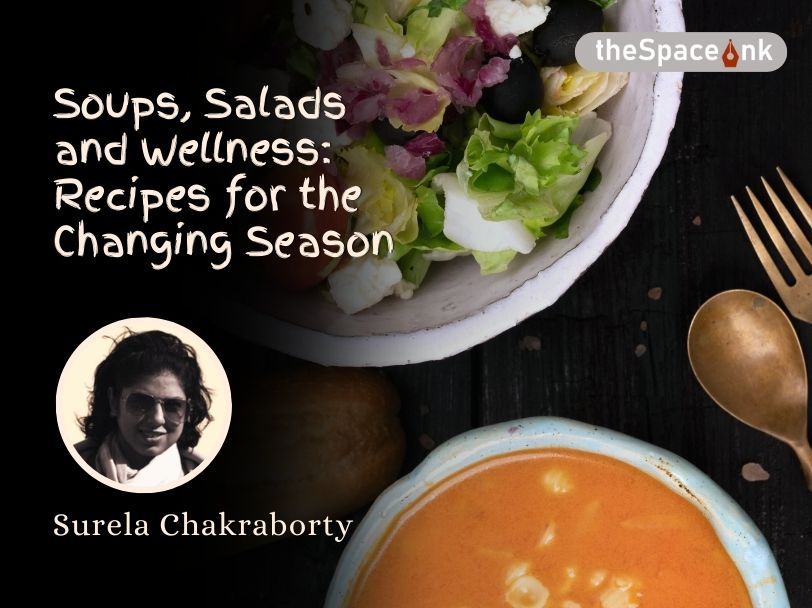
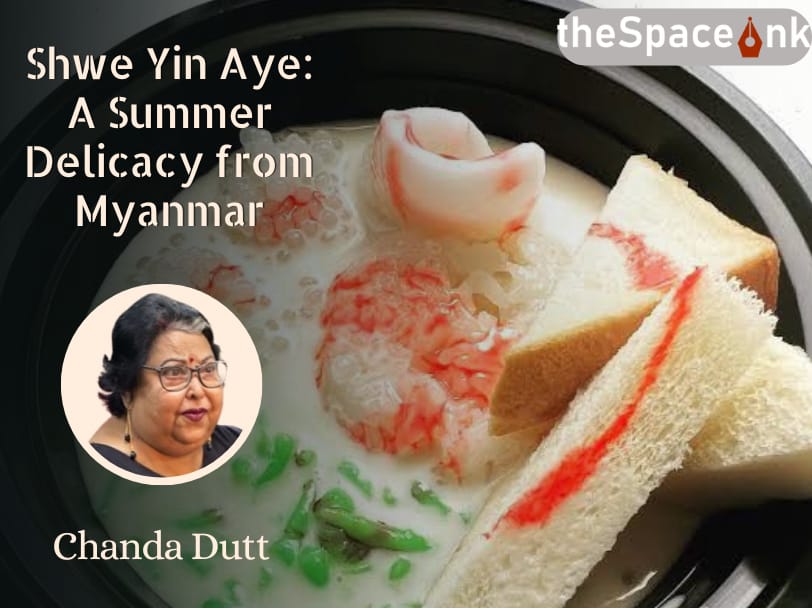


One Response
Read the article. Good you concluded it with a glossary ol terms. It will be useful to many, especially those who are not from Bengal.
Loved it.